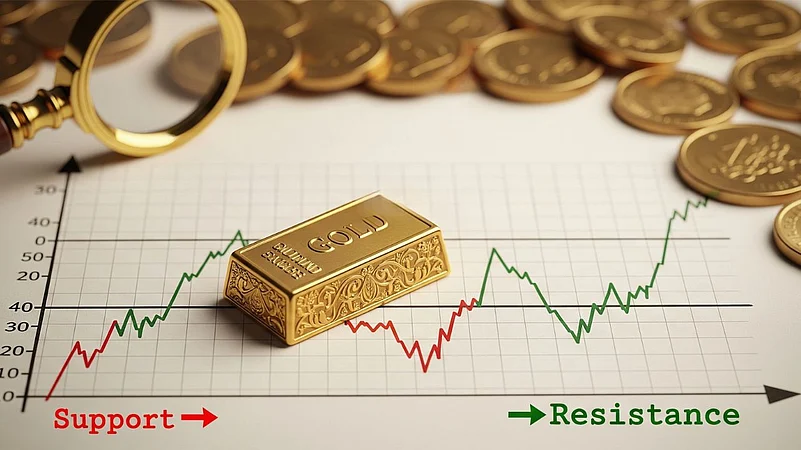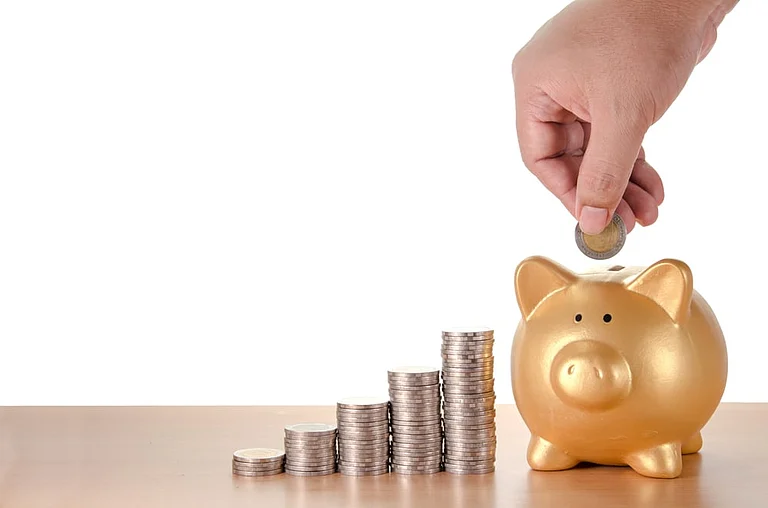
Summary of this article
Gold has hovered near Rs 1 lakh since April after a sharp early-2025 rally
Cooling geopolitical risks and the US-China trade truce have reduced safe-haven demand
A stronger dollar and the Fed’s hawkish tone are weighing on gold prices as well
Central banks are still buying, keeping underlying demand for gold intact
After delivering an unparalleled rally in the first half of this year, gold prices are stuck around the same level since April 2025, veering near the Rs 1 lakh mark. According to World Gold Council (WGC), the yellow metal has delivered more than 30 per cent returns so far this year. However, much of this return came by just April, and since then the yellow metal has changed only a little.
As of August 22 evening, Gold’s spot price quoted at 93,587.80 per 10 grams, according to WGC.
So, Why Are Gold Prices Stuck?
According to Prathamesh Mallya, DVP Research Non-Agri Commodities & Currencies, Angel One, “Gold prices are stuck near Rs 1 lakh mark as the macro factors creating uncertainty in the global markets have dried down.” For gold prices to rise from here on, it needs a fresh bout of uncertainty, Mallya adds.
But first, let us take a look at the factors that played out well in favour of the yellow metal.
Since the very start of this calendar year, US President Donald Trump has been whining about tariffs, disrupting the whole world’s trade dynamics and invoking massive uncertainty among the market participants, almost keeping them on their toes on what would happen next. Equity markets and the markets of other riskier assets do not like uncertainty. As a result, investors started flocking to assets that typically provides stable and consistent returns, thereby increasing demand for safe haven.
Further, a four-day cross-border violence occurred between India and Pakistan after the unfortunate Pahalgam terrorist attacks happened, further stoking fear and anxiety among riskier assets investors.
Then, the ongoing war between Russia and Ukraine has been happening for years now. The week-long Iran-Israel war also added to the uncertainty.
Apart from these, several macroeconomic indicators, such as persistently high global inflation, expectations of interest rate cuts by major central banks, weakening of the US dollar, and strong central bank gold purchases, all of which pushed investors toward the yellow metal in the first half of the year.
Despite Headwinds, Gold Still In Demand
According to Kaynat Chainwala, AVP - Commodity Research, Kotak Securities, “
Easing of the geopolitical risks have led to some unwinding of the risk premium, putting downward pressure on gold prices, says Kaynat Chainwala, AVP - Commodity Research, Kotak Securities. Further, the extension of the US-China trade truce by another 90 days, delaying planned tariff hikes until November 10, has reduced safe-haven demand, Chainwala adds.
The US dollar has also staged a sharp rebound after hitting a three-year low in June, supported by stronger-than-expected economic data that has highlighted continued resilience in the US economy, she points out. Adding further, she says, US Federal Reserve chair Jerome Powell has also maintained a hawkish tone, signaling no urgency for rate cuts amid persistent inflation risks and signs of a softening labor market.
Even as these unfavourable market developments are playing out for Gold, there are signs that gold is still in demand.
Chainwala says, gold remains underpinned by consistent central bank purchases and strong inflows into gold exchange traded funds (ETFs). Moreover, recent signs of a cooling US economy, along with growing concerns over the Fed's independence, have added complexity to the rate-cut narrative, she adds. Inflationary pressures driven by tariffs, coupled with a weakening labor market, have heightened fears of stagflation, providing key support for gold.
Jackson Hole In Focus
Gold has been moving sideways for over four months now. Market participants are awaiting significant triggers for a definitive direction for Gold prices.
Powell is due to speak at the three-day annual Jackson Hole Economic Symposium in Wyoming, US, where market participants will be looking for any hints suggesting the future trajectory of interest rates. Market participants are particularly keen on knowing the magnitude and the timing of rate cuts, if any.
Powell also has lately been on the edge as Trump has been criticising him for not cutting rates fast enough.
Chainwala explains, “A hawkish tone from Powell, especially if followed by stronger-than-expected Core PCE inflation data, could exert downward pressure on gold. On the other hand, a dovish shift in his messaging could provide support to gold.”
What Should Investors Do
Mallaya advises investors should allocate at least 10-15 per cent of their portfolio in gold. “Timing the gold market is a relatively difficult task, hence, any corrections can be used as accumulation for getting the benefit of rupee cost averaging,” he says.
For long term investment and capital appreciation , he recommends investors to invest via gold ETFs, gold-themed mutual funds, and Sovereign Gold Bonds if there are fresh subscription, or trade in the secondary markets where gold bonds are listed.











